Dr Saleemul Huq on Bangladesh as Climate Change Adaptation Model
Mike Horn: Extreme Explorer on Conservation Aboard The Pangaea Eco Yacht
Michael Switow on Fighting Poverty and its Impact on Climate Change
Benjamin Lao on Organic Pesticides and Using Sloping Agriculture Land Technology to Counter Soil Erosion
Davao, 17 September 2009. His work as a government employee didn't stop Benjamin R. Lao from pursuing his first love, which is farming. In fact, he plans to retire early to concentrate on his farm in Eman, a barangay of Bansalan, Davao del Sur.
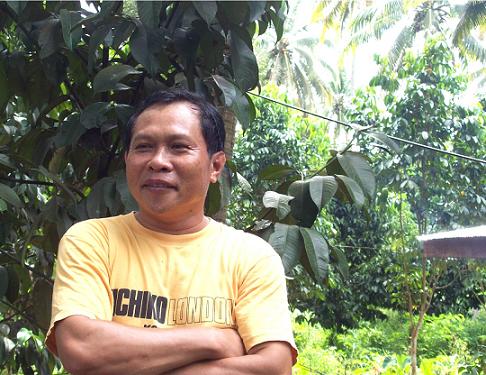
Davao's outstanding farmer, Benjamin Lao.
"My first love is farming," the Gawad Saka 2008 national awardee for coconut farming told the press corps of the Department of Agriculture Region VI. After all, his parents were both farmers and he grew up in a surrounding where people were planting rice, corn, and several other crops.
The Lao family owns about 40 hectares of land. In 1998, his mother divided the land equally among the eight children. "I am the fifth but I was unanimously chosen to assign which portion of the land should be given to each sibling," he said.
For some unknown reason, he selected the land that was so infertile that cogon grass would not even grow on it. (Aside from the five hectares he inherited from his parents, he also purchased another five hectares, which is just near his farm.)
Using Sloping Agriculture Land Technology on Barren Land
To transform the barren land into an agricultural haven, Lao started reading agricultural magazines and other publications. He also attended trainings conducted by government agencies like Department of Agriculture, Philippine Coconut Authority, and Department of Science and Technology. "I have to learn all the basics," he said.
Since the Mindanao Baptist Rural Life Center (MBRLC) is just located in an adjacent barangay, Lao decided to visit the place. "I was impressed by the way they conserve the soil and the farming systems they have developed through the years," he said.
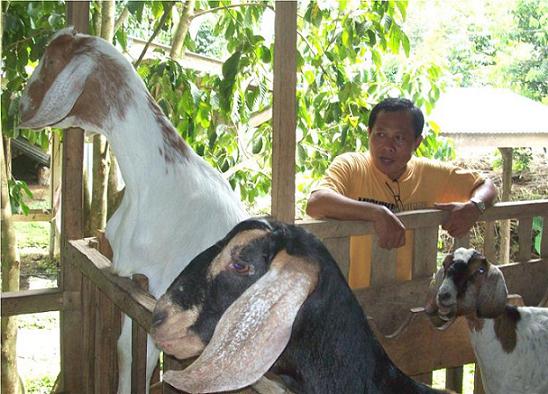
Goat manure fertilizes his nitrogen-fixing bacteria plants.
He immediately attended some of the training the MBRLC carried out and tried to adopt the techniques in his own farm. Since he was already a government employee at that time, he had to travel about two hours from Davao City to his farm during weekends just to supervise the innovations he had learned.
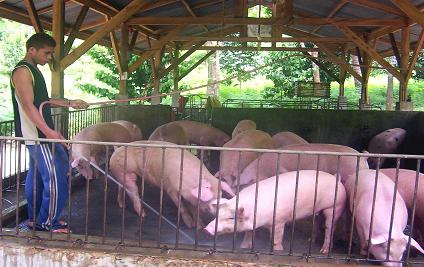
Goats and pigs provide an income stream for the farm.
The first he developed was the hilly portion. "I had to protect the soil from erosion," he said. With the knowledge he gained from the MBRLC through the Sloping Agricultural Land Technology (SALT), a soil conservation technique, he planted the area with various nitrogen-fixing hedgerows like Flemingia macrophylla, Desmodium rensonii, and Indigofera anil, which are good sources of fertilizer since these are legumes. Later on, he planted them all over his farm.
Today, he uses the hedgerows as additional feed for his goats. "Legumes contain as high as 16% crude protein and therefore provides good nourishment for my goats," he bared.
Organic Farming
Since Lao wanted to practice the principle of organic farming, he thought of adding goats.
In the beginning, he had only seven goats and the animal manure was used as organic fertilizer. But he found out there was money in goats, so he opted to increase the number. Today, he has about 170 goats in his farm. "Buyers just come to my farm and select the goats they want to buy," he said.
Goats are also good sources of milk. The milk he gets from the goats are used as an ingredient for their homemade Donna Belle durian ice cream. The extra milk are sold either as ice candy or as fresh milk at the market outlet in the town proper, about ten kilometers away from the farm.
Lao also raises pigs in his farm – about 32 heads. "They are good source of income for my family," he said. He uses the manure as source of methane gas and organic fertilizer. "We save money since we are no longer buying LPG and firewood to cook our food and products."

Sugar from coconut has a low glycemic index.
When he inherited the five-hectare farm, there were already coconut trees growing. Every three months, he harvests 400-600 coconuts. But several months after he planted the nitrogen-fixing legumes, the coconut yield markedly increased to 15,000 nuts per quarter.
Aside from the revenue he gets from copra, he also ventures into a value-adding enterprise right in his farm by producing coconut sugar and coconut honey out of the coconut sap or toddy gathered from his coconut trees. "These coco products have low glycemic index, a measurement of blood sugar, thus good for diabetics and those having prostate problems," he said. "It has also glumatic acid, the same ingredient present in Viagra."
Currently, he is selling his coco products at the town outlet, in the cities of Digos, General Santos, Butuan, and Metro Manila. "Demands for our products are continuously increasing," he said.
Zero chemical pesticides
On value adding, Lao pointed out, "(It) is an important component in a farming system. For instance, if you have goats, you must know how to produce fresh milk and having other saleable products from the animals. In the case of coconut, don't think only of copra because when it is cheaper, you can always have another product to sell."
Aside from coconut, the farm is also teeming with various fruits like lanzones (more than a thousand trees), durian (700 trees), mangosteen, and rambutan. "I bought them one at a time from my salary as a government employee," he said.
In his farm, you won't see his farm workers using chemical pesticides. "I had a tragic experience with chemical pesticides when I was still a teenager while cultivating rice in our farm located at the neighbouring barangay," he revealed.
Instead, he recommends using Eman, which stands for "epektibo, mura, at natural" (effective, cheap, and natural). "This is a concoction composed of fresh goats' manure, kakawate, makabuhay, and hot pepper," he informed. "These are soaked together for 48 hours and after that the mixture is ready for application."
According to him, the mixture is effective in repelling plant pests and diseases. In addition, it is also a good course of foliar fertilizer. "We are committed to help preserve our environment. We want to teach Filipino farmers the right way of farming through natural method and that is by not using commercial fertilizer or pesticides," he said.
To people who have been to his farm, they have described it as a haven. You don't see only livestock and crops but ornamentals as well. "It's nice to see beautiful flowers underneath the trees," he explained. "Also, the flowers serve as breeding areas for beneficial insects like spiders and dragonflies."
Davao's Outstanding Farmer
In 2005, Lao was chosen as the most outstanding farmer of Davao del Sur. The following year, he was recognized by the Philippine Council for Agriculture, Forestry and Natural Resources Research and Development as a Magsasakang Siyentista (scientific farmer). Last year, the Department of Agriculture bestowed the honor as one of the country's outstanding farmers. "It was far beyond my expectation," he said of the recent award he received.
Visit Benjamin R Lao's website here or contact him.

Apart from vegetables and trees that earn him money from the prouce, Lao also plants ornamentals to cultivate butterflies and spiders which he considers beneficial to his farm.
Sebastien Marot of Friends International on Rescuing Streetkids and Creating Green Enterprises
Dr Thomas Goreau on Coral Reef and Fisheries Habitat Restoration
Prof Gatze Lettinga on Social Security For All Through Clean Water Treatment
John Kaizan Neptune on Bamboo Magic at Miri International Jazz Festival
Randy Raine-Reusch on Rainforest World Music Festival 2009
Sarawak’s pride and music lovers’ delight – the Rainforest World Music Festival – is going to tingle with rare sounds and sensations, as Malika Naguran finds out from her interview with the show’s Artistic Director Randy Raine-Reusch.
Randy, what are some of the more unusual sounds or experiences that we can expect from this year’s Rainforest World Music Festival? You went at great lengths to source Inti Illimani for instance.

This year I have been fortunate to be able to invite some of the top representative artists from Chile, Hungary, China, New Zealand and Tanzania! This is a year of outstanding musicians. Inti-Illimani and Muzsikas are World Music legends with careers that span three decades and have huge international reputations. I am very excited to have artists of such stature to be performing at our festival.
Red Chamber has two of China's top performers in the group and you can't get any better than this! The Zawose family are famous for travelling the world with their now deceased World Music legend Hukwe Zawose. They are simply amazing and unlike any African band that has ever graced this stage. They will simply blow people's minds!
What are some quaint or endearing traditional musical instruments that the audience can enjoy watching being played, and listening to?
Well there are quite a few this year. The jouhikko is the feature instrument of Jouhiorkesteri. It is a small rectangular bowed lyre where the fingers actually fit through the body of the instrument to finger it. It is an instrument that you see in medieval paintings and the members of Jouhiorkesteri have been responsible for its revival.
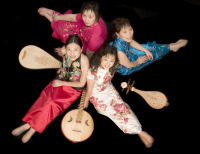
Red Chamber - from Tang dynasty to jazz.
Muzikas will bring a gardon, an instrument that looks like a rough-hewn cello, but it is hit with a big stick as a percussive instrument, its really bizarre and amazing.
Moana & the Tribe will bring some very rare Maori instruments that are seldom seen. St Nicolas Okiestra (there are a few versions of this name depending on the language) will bring some traditional Polish instruments that we have never seen before as well. The list goes on...
You’ve played, I suppose, more than a hundred musical instruments and can be biased towards certain sounds that you personally enjoy. Are you on the lookout for something unique each time with the bands that you select?
Actually I have a collection of 700! I am not biased towards any one instrument, except I always want at least one traditional instrument in each group. I am always on the lookout for something that has not been here and will provide the audience with a new and exciting experience. I want this festival to always have some surprises.
What is your criteria for selecting the bands?
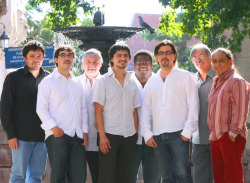
Inti-Illimani from Chile brings 4 decades of Latin American music.
I look for excellent musicianship, I always want a traditional instrument included, I want the band to be excited to be coming to Malaysia and Borneo in particular, I look for bands that really want to share their music and culture, while learning about the cultures in Sarawak and surrounds.
I look for bands that have not been here before, but when I bring a band back it is because I feel that it has something more to give to our audience. I look for styles of music or countries that have not been represented yet, but also styles that the audience really likes and wants more of.
I also look for a blend of impact, so that more acoustic groups perform early in the evening and appropriate for families, and louder more electric bands perform later in the evening for those that want to dance. I am trying to find more indigenous groups for future festivals, as there is a magic and purity in their performances that has been lost in other music.
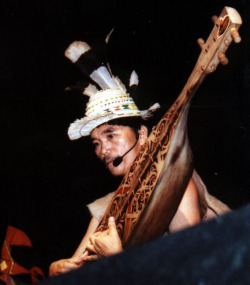
Sarawakan Lan-E-Tuyang.
That is why I have brought the best sape players in Sarawak back this year, as their music is pure gold. Maybe local people may not appreciate it, but ask any of the other musicians once they hear it and they will tell you how special it is! I must say that I do shy away from music that I think might offend the sensibilities of my audience, but this just seems to lead me towards more sophisticated choices.
According to the lineup of performers, the range of the sounds is wide and exciting. Moana & The Tribe on the Maori tradition sounds more spiritual than world. But that can be argued. What is your definition of World Music? After having served as Festival Director for 12 years, has that definition changed?
Actually my definition for World Music has not changed; it was in long form "Music of, or stemming from a traditional culture." However I have been more often quoted in the short form "Local music, not from here", of course in Sarawak's case it is from here.
Music and spirituality have been mixed in every culture of the world, and many musicians look upon their music as their own form of spirituality, so the case of Maona still fits the definition. Oudaden also has that element but from an Arabic perspective. The world is vast and there are so many styles of music that our audience has not heard yet, and I hope to bring a lot of it!

Zawose Family Africa from Tanzania carries the legend of Hukwe Zawose.
Randy's photograph taken by Imran Ahmad of Escape Inc. The rest courtesy of organisers Sarawak Tourism Board.
This year, the performers that will dazzle the crowds three nights running from 10-12 July are: Inti-Illimani (Latin America), Red Chamber (Canada/China), Akasha (Malaysia), Poum TChack (France), Lan-E-Tuyang (Sarawak), Zawose Family Africa (Tanzania), Noreummachi (Korea), Maona & The Tribe (New Zealand), Jouhiorkesteri (Finland), Muzsikas (Hungary), Jeff & The Vida Bluegrass Band (US), Dazkarieh (Portugal), Oudaden (Morocco), Asika (Malaysia), Sekaa Jaya Jenggala(Bali), The St.Nicholas Orchestra (Poland).
Also featuring Rainforest World Crafts Bazaar. Be there, or be very left out!
Rainforest World Music Festival is on July 10th-12th, 2009 at the Sarawak Cultural Village.
Tickets online: www.ticketcharge.com.my
Max Ammer and Community-based Tourism at Papua Diving, Raja Ampat
By Mallika Naguran
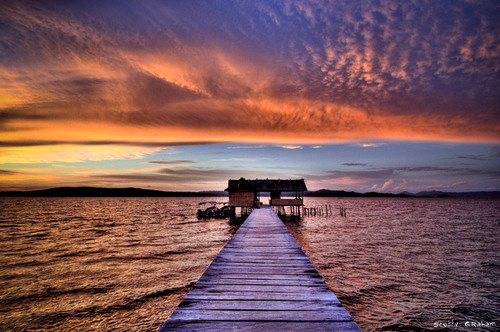
Another dazzling sunset at Kri pier when the day sighs to a close.
West Papua, 28 March 2009. Being eco can mean a number of things to different people; the first thing that springs to mind for most is the preservation of nature. For Max Ammer, a pioneer dive operator in Raja Ampat and owner of Kri Eco Resort and Sorido Bay Resort at Papua, Indonesia, people are at the heart of any ecology-related business.
“Eco to me means working with the local people to build a better future,” he tells over dinner. A gecko emerges from behind the ketchup bottles, approaching us cautiously on the wooden table. I wonder if I should remove my hand that’s resting in its path – I do love animals, but I don’t fancy my body becoming part of their habitat.
Max extends his hand out to the gecko to crawl on. “You know when I built this place 15 years ago, I didn’t have to specially rear these wild things. They just appeared – we have monitor lizards, ducks and birds just roaming around.”
Every night, following dinner, the guests gaze at the juvenile bamboo sharks wading in the shallows just below the dining lounge on stilts. In the morning, we are awakened by hysterical cackles from endemic birds such as eclectis parrots, brush turkeys, sulphur crested cockatoos and hornbills. No need for alarm clocks here.
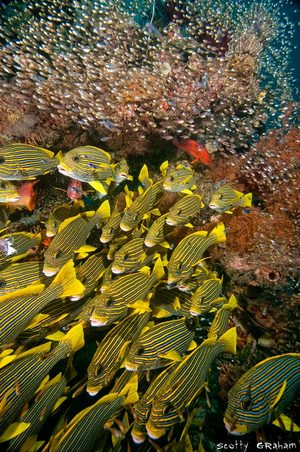
The omnipresent sweetlips.
At breakfast, we are startled to see a pair of coconut crabs huddled around a bamboo pylon at the lounge ceiling. Hideous as they are, they are also harmless and rather immobile; apparently they lie on coconut trees and love cracking the solid nuts with their rock-hard pincers. I sat a respectable distance away from them.
The guest rooms at Kri Eco Resort are also perched above the waters, so a daily sight would be numerous fish species flitting around the pylons, seeking shelter from sea currents or storms. Baby barracudas pursue parrotfish of amazing variety, tagged along by turtles.
Little of the coral reefs at Cape Kri (house reef) is destroyed with the building of Kri Eco Resort, including the jetty that Max’ father helped to build, aided by local talent and muscle. One such talent couldn’t measure straight, resulting in the construction of a not so perfect wooden platform that scuba divers walk on to get to the dive equipment center at the end of the jetty and to hop on to the dive boats.
Everything about Kri Eco Resort is handmade: the Sunset Lounge and its lazy deck chairs, the bamboo chalets, the coconut leaf and nut wall finishing and décor. Even the bricks are made by hand by the senior folks, whom Max employs, with the job title of “All Rounders”.
“I want local people to make the money,” says Max, who reveals that he could have built the resorts (including the higher-end Sorido Resort) and run the operations quicker with more experienced staff from other parts of Indonesia. In fact the dive crew are all Papuans, a number of them barely made it through school.
But Max is committed to Raja Ampat’s people in more ways that one, and its not always for business. He builds local talent and skills in this remote region of Indonesia spanning from tourism-related ventures to trades for livelihood to careers in scuba diving.
Mad Max
Max landed on Pulau Kri, part of Raja Ampat in 1992 on a motorized rubber boat. He found himself in the heart of darkness, away from civilization, close to indigenous Papuans who are warm, dark and beautiful, and this suited him fine. It reminded him of his growing up days in Nigeria though born in Holland.
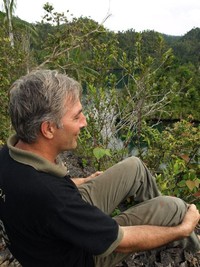
Max Ammer explores Papuan islands.
He had in the last few years explored the area for World War Two wrecks, specially commissioned by the US aviation authorities, and found quite a few aircrafts buried in silt.
Aircraft, after motorbikes, is Max’ passion. He had fiddled as an aircraft mechanic for a few years before flying one finally and is fixated with all things that fly (and more so if they crash).
Retrofitting classic Harleys as a youth, Max’ building streak has led him to design the two resorts on Kri island – based on sketching on paper – and a load of islanders to saw things and nail them together. A pinch of inspiration and a chunk of madness is all that it took to get Max Ammer going into building an eco-led business in the unknown territory of Papua.
Conservation of Raja Ampat
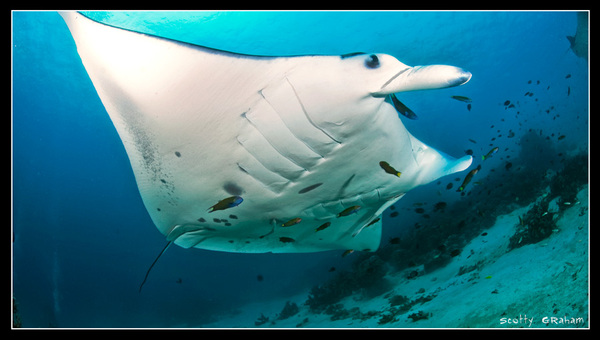
You can lose yourself swimming with the mantas here.
The pristine reefs of Raja Ampat and the plentiful marine species were under threat with destructive fishing practices such as bomb fishing and deep-sea trawlers. The big fish started to dwindle. Logging and mining on the islands impacted the waters with pollution.
Max knew he had to do something to stop the destruction and pollution. Raja Ampat needed protection, or better, conservation, or risk losing its intrinsic beauty and biodiversity. It was a stroke of luck when Dr Gerald Allen, renowned marine scientist and author, ventured into this path. Dr Allen was impressed with the numerous species of freshwater fishes found here, and the pristine state of corals. In two single dives, he recorded the highest count of fish species: 283 species at at Cape Kri and 281 at South Fam group. A benchmark for an excellent fish count is 200.
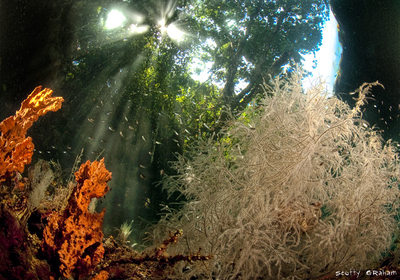
The Passage is a highlight in Papua diving.
A consultant with Conservation International (CI), Dr Allen canvassed for Papua to be considered in the organisation’s conservation programme, and after three years, in 2001, it happened. Plans for a marine park were drawn; by mid-2007, the Raja Ampat Marine Park was formally declared.
When I visited Kri Eco Resort in March 2009, I found out that the zonation and management plans were still under development, however, an important regulatory mechanism had already kicked in: the Raja Ampat Tourism Entrance Fee of Rp500,000 that involves the issue of an annual waterproof plastic entrance tag.

Max' passion to preserve Papua soars high.
Part of the fee goes to community development, conservation and enforcement, covering marine areas and land-based activities such as logging and mining. In 2007 and 2008, priority was given to the “Posyandu” system, which is a healthcare provision for mothers and children. Something that’s also close to Max’ heart: in the early days, he had improved the water wells in Raja Ampat with chlorination and safety measures and created 13 new wells for the people.
Conservation at Raja Ampat now is taking on new heights with an aerial monitoring programme sponsored by CI and other NGOs. This involves a light aircraft surveillance to keep an eye on illegal activities on water and land. And the pilot keeping vigil behind the wheels is no other than Max Ammer himself.
People Welfare and Development
Nikson Soor born in Batanta, Raja Ampat, is just one example of how a Papuan is groomed to become an asset in Raja Ampat tourism industry. This amiable and energetic Papuan dive master is a manager at Papua Diving with over 11,000 dives logged.
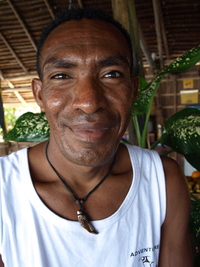
Nikson now protects turtles and more.
Nikson tells me that he first met Max when he was a wee boy, selling turtles that he had just caught with his fisherman father. Max bought those turtles from him and promptly released them. Nikson couldn’t understand this white man’s actions, but soon learnt the beauty and fragility of marine life.
“He just put a tank on me and took me down,” grins Nikson, who added, “and my eyes opened wide looking at the underwater life.” Nikson, who was just 14 then, was instantly converted.
It is the start of a long and deep friendship between the two; Nickson who is 34 years old, and Max, 47. Today, Nikson is not just a top dive guide sought after in Raja Ampat, he is also an environment advocate, concerned with pollution and illegal fishing. “I will teach Nikson how to fly even,” laughed Max, who is eager to begin the aerial surveillance.
Don’t expect to see a Western dive guide or master at Papua Diving, because there isn’t one. Max believes in investing in local education and training local Papuans, a road he’s taken that’s often long and bumpy.
“They are good people and I want them to learn a new trade and to earn some income,” he said, hoping to get them out of the poverty cycle. Dive guides at Papua Diving are given proper employment contracts; they are also paid fair wages, provided with food and shelter, and given weekly day off plus regular vacation.
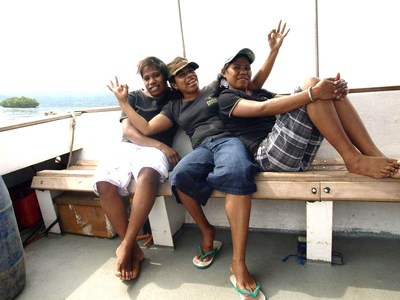
Staff on boat excursion with Max and guests on their day off.
Two kitchen help, both women, had expressed interest in becoming dive guides and today they are being trained for this career prospect. It is no wonder that there is a deep sense of belonging among the staff at Max’ resorts.
Sustainable Clam Trade
Giant clams are a delight to behold in a number of the dive sites around Raja Ampat. These, however, are taken away by local fishermen and sold as food. Clams, like fish, are an important source of nutrition for Indonesians.
Once Max had bought 10 giant clams from a fisherman for US$80, and then released them. But he realized that couldn’t keep doing that.
Max now has an idea. By introducing a clam farm, Papuans will learn how to grow clams and sell them in a sustainable fashion and will soon learn to leave the giant clams in dive sites alone.
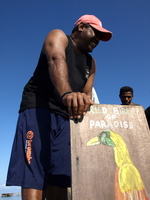
An ecology treat awaits the Papuan explorer.
Other plans afoot are homestays and kayaking adventures around the exotic mushroom islands. This augments what he has already established with the locals – bird watching tours in particular the Red Bird of Paradise. Proceeds go entirely to the villagers, who then see the value of this tourism activity and stop them from catching these birds and selling them overseas as exotic pets.
A trip to Max Ammer’s resorts is worth every dime. If you plan a trip in 2010, you may just enjoy his other service, a live aboard dive boat, one which he hopes to start designing soon - and by himself of course.
Photography by: Scotty Graham, BittenBySharks.com and Mallika Naguran. Have a chuckle reading Scotty Graham's photo blog.
Up next, destination stories on Raja Ampat and Kri Island.
More information on Kri Eco Resort, Sorido Bay Resort and Papua Diving at:
Sorong Office:
PT Papua Diving
Jalan Gunung Tidar No.1
Kampung Baru Sorong
PAPUA - 98413 Indonesia
Phone: +62 (951) 328 038
Fax: +62 (951) 328 038
info@papua-diving.com
Contact Max at max@papua-diving.com
This trip was kindly sponsored by SilkAir (from Singapore to Manado, Indonesia) and Express Air (from Manado to Sorong).
About Silkair
Singapore-based SilkAir flies one of the youngest fleets in the Asia region, with an average age of 5.5 years. It operates fifteen aircraft, nine Airbus A320-200 and six Airbus A319-100 aircraft. SilkAir positions itself as a premium, short-to-medium haul regional carrier offering unique appeal amongst leisure and business travelers in Asia. Visit www.silkair.com for more information.
In conjunction with its 20th anniversary celebrations, SilkAir recently announced the adoption of Friends-International, an award-winning Non-Governmental Organization (NGO) which focuses on reducing the number of street children across Asia and beyond, as its official charity. Sharing Friends-International’s vision to give children access to education, SilkAir will offer two children from the NGO’s vibrant Phnom Penh headquarters SilkAir Scholarships to study English at the Australian Centre for Education in the Cambodian capital.
About Express Air
The gateway to East Indonesia with daily schedule service from Jakarta to Makassar, Ternate, Sorong dan Jayapura. Its route network includes other new destinations within Papua such as Kaimana, Fak-Fak, Manokwari, Nabire, Tanah Merah, Babo etc.
Express Air has six 32 seats Dornier 328 turbo-prop, a modern advance high performance aircraft with latest technology on board to serve number of destinations along West-East Papua axis, Sulawesi, Maluku, and Nusa Tenggara.
Mark Ginsberg on Zero Energy Communities through Clean Energy Technologies
by Mallika Naguran
20 April 2009, Singapore. “You might have noticed that we have a new President,” said Mark Ginsberg as he flashed a slide of Mr Barack Obama on the screen. Laughter from the audience greeted the Board of Director with the Office of Energy Efficiency and Renewable Energy (EERE), Department of Energy, USA.
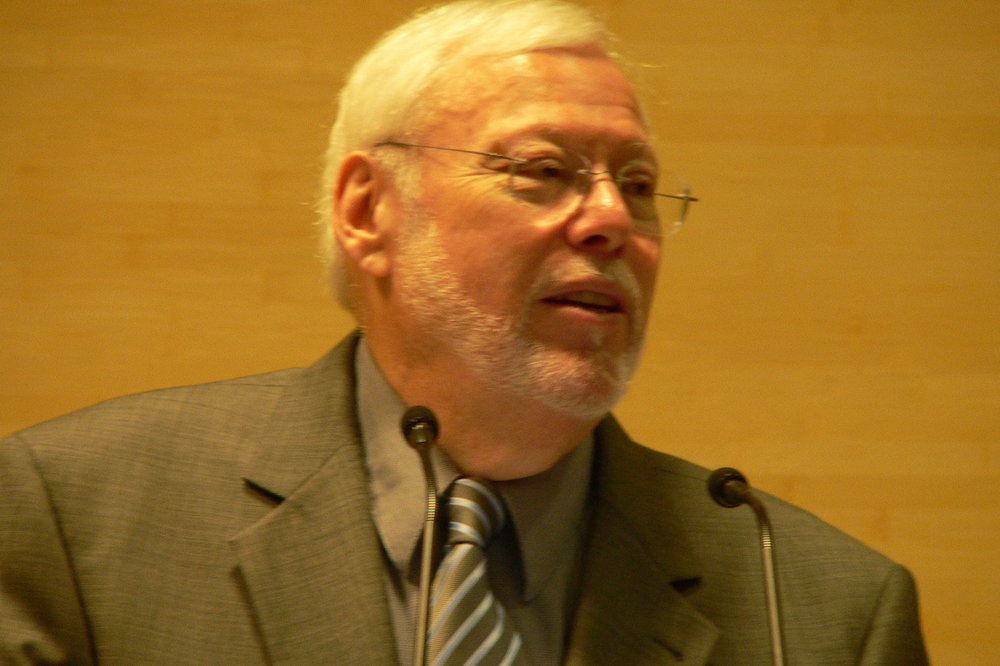
"Leapfrog into new generation technologies" - Mark Ginsberg
Mark was addressing a rapt audience in Singapore at the invitation of the Energy Studies Institute of the National University of Singapore on 16 April 2009. His mission was not just to introduce the new President’s environmental measures, but also to put forth an argument that economic prosperity can be had from the development and proliferation of clean energy technologies.
The connection between economics and energy is clear and present, and a big deal. “I’ve joked about energy efficiency being inevitable for the last 30 years. And now it finally is. Now the world leaders are talking about it in the way I could never have imagined years ago,” shared Mark. Having served in previous US Administrations, Mark described Obama’s inaugural address as “music to my ears”, in particular when the new President spoke about connecting energy to economic solutions.
The President is bent on cracking America’s oil addiction. He has announced a US$150 billion investment in energy technologies over the next 10 years that will restore the economy in the short term, and the creation of five million new jobs. In the long term, the country will see a more efficient, effective and productive economy. This sum is part of the newly announced American US$700 billion recovery and reinvestment budget.
“We got to be lean and clean in order to make it more successful in the future,” said Mark, explaining that strategies are in place to “reduce oil imports, put one million plug-in hybrids on the road that go up to 150 miles per gallon, and to ensure than 10% of our energy come from renewables by 2012, and 25% by 2025.”
Drilling down to details, the US is embarking on a slew of initiatives: double the alternative energy over the next three years, modernise 75% of federal buildings (currently there are around 500,000), and improve the energy efficiency of two million homes - particularly eligible are low-income families. “We will build solar panels, wind turbines, construct fuel efficient cars and buildings, develop clean technologies that will lead to more jobs, more savings and cleaner safer planet for us all,” said Mark.
Mark spoke more importantly of the development of new generation of technologies. “The concept of science and discovery is to invest in science to achieve transformation technologies (not just incremental) to leapfrog into the next generation,” he said. Transformational technologies will change the landscape of energy supply and demand, boost economic prosperity, create millions of green jobs and increase competitiveness. “Not only the US, but if the whole world is not competitive, it will be business as usual,” said Mark.
As part of his commitment in ramping up a new generation of technologies, President Obama had appointed Nobel Peace Prize Winner and Head of National Laboratory Dr Steven Chu, the new Secretary of Energy, who has since restated the Obama Administration’s energy priorities. Dr Chu, described Mark, spoke about the need to pursue material and cost effective measures with a sense of urgency.
“He said that we can’t wait any longer,” said Mark. So some major priorities and goals have been set such as achieving sustainable cities through zero energy buildings and communities.
Sustainable Cities
Currently half of the electricity supplies of the US come from coal, 20% from nuclear, and only a few percent from renewable sources. With coal as a cheap source, the switch to alternative energy supplies is going to be slow but sure.
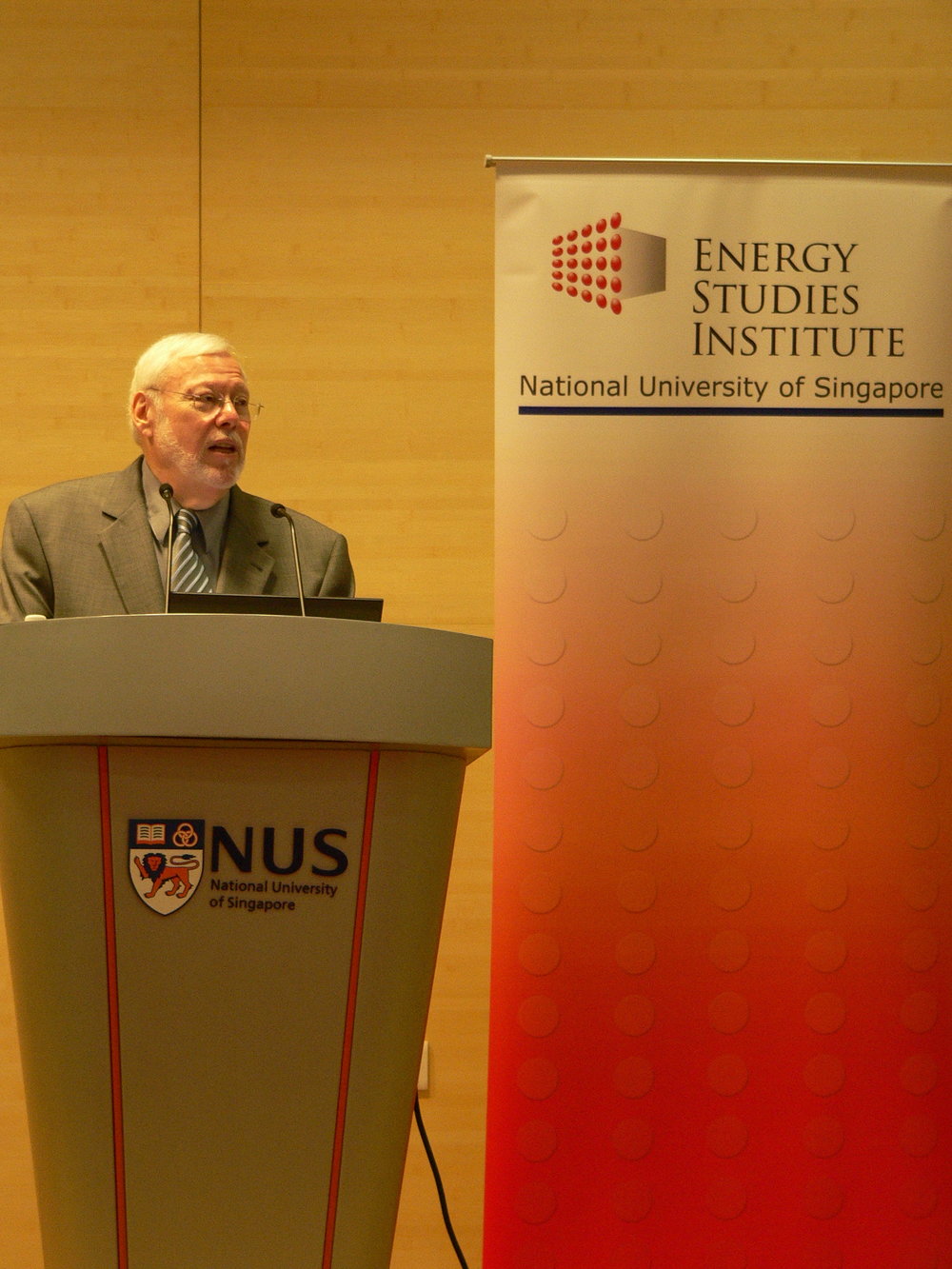
Waste is an enemy.
Strategies to achieve sustainable cities thus include increasing supplies of alternative energy sources and advancing technologies that lead to zero energy communities. “I am optimistic about solar energy,” said Mark. “Solar water heating is cost effective; concentrating solar has great applications and photovoltaic solar can be attached to buildings in a way that can make buildings power plants.”
Mark described how the head of MIT had told President Obama when he was visiting the institution about its research projects: microdots on windows to harness solar power (a nano capability), advanced battery and storage and non-food biofuel generation. Wind turbines, said Mark, are improving with lightweight materials harnessing greater wind from lower speeds, and he is hopeful: 20% of energy sources would come from wind, he opined, up from few percentages now.
Other promising technologies that will change the shape of things are geothermals and nanotechnology. “There are over a million geothermal heat pumps in the US. My interest is ground source heat pumps for buildings. They are cost effective and environmentally sound,” said Mark.
As for biofuels, Mark stressed that the US government is committed to next generation non-food biofuels. “We do not want to compete with food,” he said, adding that there are existing farmlands in the US and Europe that can be used for energy crops.
In the US, corn is a major part of its ethanol product. In terms of phasing out corn-based ethanol, it will take a while. “Historically, mid-western farmers produced ethanol for their trucks on their farm and they produced a little more and sold it,” explained Mark. Even with the progress with alternative energy sources, Mark suspects that in the future, there will still be some corn-based ethanol in the US “as it’s one of the feedstock”. He added, “I don’t know if they’ll be able to make that conversion to the stalk and not the corn, as energy content (of the stalk) is less, so the economics will begin to make the change.”
Economics will change with technological breakthroughs. “We’re working like crazy to invest in nonfood second generation cellulosic fuels. Our idea is to take a variety of feedstock from different plants, find the best energy sources from those plants, explore conversion processes (chemical or thermal) that can be the most effective ways of utilizing the energy in each of the different plants.”
Human genome technology is also being employed in research, revealed Mark, so that plants can produce energy. Mark then shared what the US Administration has in mind to reduce demands. For one, there is the Save Energy Now programme for industrial assessments and tools to save energy resource at the workplace. In the US, buildings guzzle 40% of energy consumption. This figure is set to grow if nothing is being done.
Mark, however, spoke about arresting this by optimizing system components and work toward zero energy building and communities. Firstly, there are down-to-earth tools in place to help buildings operate more efficiently such as energy labeling schemes like Energy Plus, Consumer Star, and standards set by the US Green Building Council.
Then, of course, there’s science fiction. “We are working towards buildings becoming power plants,” said Mark. He spoke about new generation of sophisticated controls as the key part of moving towards smart grid, beyond smart buildings. “From power plants to refrigerator that have controls that can send electrons to the right place at the right time at the right price; and that can optimize the performance of the electric grid – this is big part of President’s investment strategy,” said Mark.
“We are moving towards zero energy buildings; buildings that are so energy efficient that produce their own power through photovoltaic cells or heat pumps that over the course of the year, they produce as much energy as they require,” he said. Mark shared how he faced laughter and derision 15 years ago when he talked about zero energy buildings; now he sees this being developed as a study by the International Energy Agency, and a special project by the Asian Energy Partnership. Mark served as Director of the Arizona Energy Office before joining the Department of Energy in 1991.
“The research goal at US EERE is that (we are confident) with the advancements in energy efficiency technology of renewable technologies, we can achieve cost effectiveness in a building; so that a typical building in 2025 will cost the same as a zero energy building. With the new investment that the President is making, we think we can move that date up substantially.”
In Zero Energy Communities, everything is a resource and nothing is waste. For example, buildings that serve as power plants, and municipal waste that goes into local bio-refinery for transportation fuel instead of landfills.
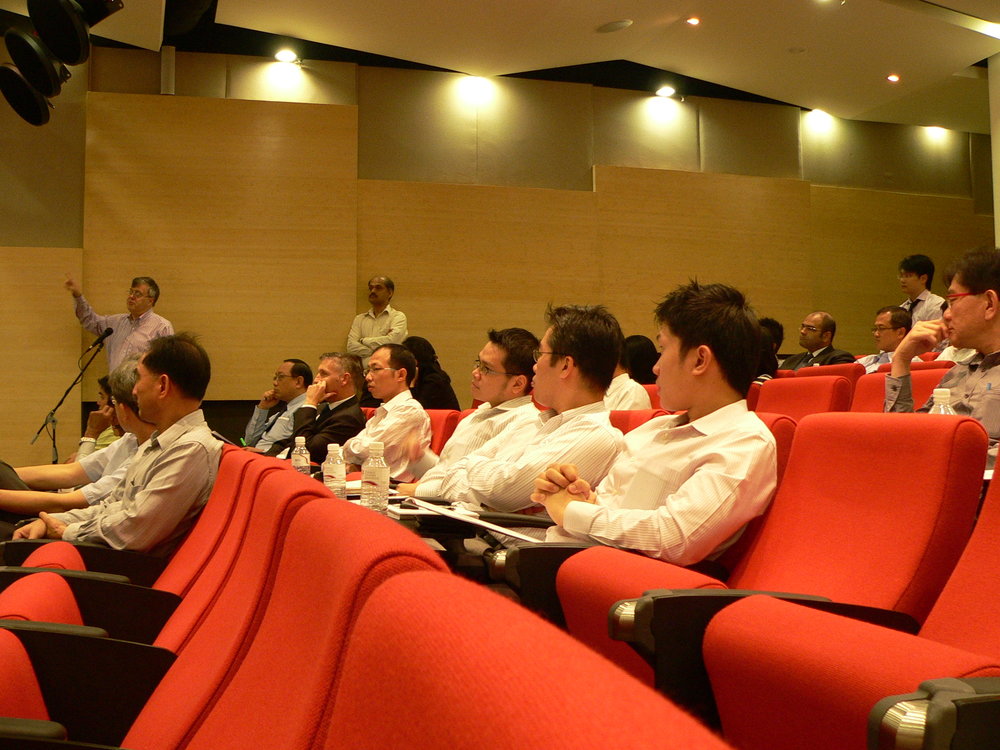
Ideas, not oil addicts at the Energy Studies Institute.
“Waste is our enemy and we need to overcome some of that,” said Mark.
Mark is optimistic about the future because of new emerging technologies. These, he said, can break through the problems of the past, and genuinely apply for current solutions.
Photos by Mallika Naguran.
Useful Sites:
Energy Studies Institute www.esi.nus.edu.sg
Office of Energy Efficiency and Renewable Energy www.eere.energy.gov
Alliance to Save Energy www.ase.org
Building technologies programme www.highperformancebuildings.gov
US Green Building Council www.usgbc.org
Promoting an Energy Efficent Public Sector www.pepsonline.org
Prof Ernest Moniz on Innovations for Energy Efficiencies, Carbon-free Electricity and Alternative Fuels
Singapore 22 January 2009. Two new policies have to be in place in tackling the escalating demand for energy, said Professor Ernest Moniz, MIT Energy Initiative Director and former US Undersecretary of Energy serving the Clinton Administration.

Towards technology pathways.
The first order policy is to cap carbon emissions and improve economic efficiencies of energy. The second order policy is to focus on transportation and electricity by developing new technologies. Moniz was speaking to a group of scientists, technologists, businessmen, MIT undergraduates and alumni at the start of a symposium on the Challenges and Opportunities in Energy: Perspectives from MIT.
Analysing data on how the different energy sources are used, Moniz observed that 70% of coal-fired energy typically goes to powering buildings, both residential and commercial. “Managing the built environment is thus critical,” he said. Petroleum, more than any other energy source, however, is being pumped to keep transportation on the move.
This scenario gets scary with escalating demand and “doubling of global energy use and tripling of electricity use by 2050” against dwindling supply of fossil fuels and slow-paced alternative energy sources. Coal, he figured, would double in its use in the world, however, technology will mitigate its carbon emissions due to increased carbon capture and storage (CCS) facilities built alongside these plants.
The biggest energy guzzler appears to be Canada, consuming around 16,000 kWh per capita followed by the US at 12,000 kWh per capita annually, according to the UN Human Development Index. The study plotted 60 nations representing 90% of the world’s population. The index seems to reach a plateau when the average nation’s people consume about 4000 kWh per capita of electricity annually.
Singapore, a city state, consumes 8,000 kWh per capita per year - more than industrialised Japan and Europe.
Carbon dioxide and other polluting gases emitted due to the burning of fossil fuels lead to warming temperatures. Moniz spoke how half a degree Celsius of temperature increase is enough to cause “drastic consequences” let alone further rises due to unchecked energy consumption globally. He referred to the contraction of glacial ice due to global warming. In particular, the Himalayan ice melt that will eventually impact the Mekong River, with subsequent raised water levels leading to “huge implications”.
The solution, says the physicist, is to create energy efficiencies and directing them to areas that need it the most, for example in technologies that minimise carbon emissions. “We need more sophisticated means to tackle technology pathways,” he said. He highlighted that because of the problems of scale associated with global energy consumption, we need multiple technologies to be developed, "not just one or two".
The key technology pathways he ranks with his own “four-star Michelin” labels are: harnessing energy efficiencies, developing carbon-free electricity (solar, nuclear and coal backed by CCS facility for example) and creating alternative fuels for transportation (biofuels, hydrogen and clean electricity).
The MIT Energy Initiative or MITEY will support such technology pathways, he said. Its multidisciplinary researches focus on innovative technologies (how conventional energy is produced, distributed and consumed), transformational technologies (developing alternative energy sources including economic management), global systems (to meet energy and environmental challenges) and enabling tools.
Through the $1.7 million grants received through seed funding, MIT researchers are making breakthroughs with innovations such as the supervalent battery for higher energy density at lower cost (Donald Sadoway), solar thermoelectric generator for the developing world (Rajeev Ram), improving biofuel production by engineering yeast tolerance (Gregory Stephanopoulos) and 14 other research projects. To push adoption of these technologies, MITEY will also look into doing some "honest brokering", described Moniz, with energy stakeholders and industry.
MITEY was launched by President Susan Hockfield when she took office in September 2006 in the US. Addressing the audience in Singapore at the symposium, she remarked that while greenhouse gasses are a threat to society, with the world facing economic recession, the imperative to act should be even stronger requiring “technology invention to tackle economic drought.”
The symposium was organised by the MIT Club of Singapore as part of its 25th anniversary celebrations in conjunction with the Singapore MIT Alliance and Singapore-MIT Alliance for Research and Technology (SMART) Centre.
Photo by Mallika Naguran
Dr Kala Vairavamoorthy on Efficient Water Usage, Urban Planning to Mitigate Climate Change
26 December 2008. “The problem in many Asian cities is not that they don’t have water, but that the supplies are very erratic,” says Dr Kala Vairavamoorthy from the University of Birmingham, UK. Kala was in Singapore recently to give one of the regular Distinguished Visitors Lectures sponsored by the British High Commissioner. His talk addressed an issue that is becoming almost as frequent a headline as oil prices or CO2 emissions.
In most cases, argues Kala, who holds the Chair in Water Engineering at his university and heads the SWITCH project researching water planning worldwide in conjunction with UNESCO, the problem is simply down to inefficient usage. Cities such as Colombo in Sri Lanka and Delhi lose as much as 50% of their original water supplies.
“Most of the water systems in the major cities work OK right now, so people don’t want to change even though they know there are impending problems. But if we take a realistic look at the way our cities are developing, it’s easy to see that the systems are completely unsustainable,” he says. “It’s a time bomb.”
But if the water supply systems in cities around the globe are reason for concern, then the sewage systems should have us collectively running for the city exits. According to Kala’s figures, up to 85% of all sewage water – both city and rural - is untreated, and is allowed to simply run off to nobody knows where. Compound these facts with the indisputable effects of climate change - major floods, droughts leading to low water flows and sewage stagnation - and the recipe for what Kala calls extreme events is almost fully baked and ready to serve.
“The problems we see already, like cracking water pipes and sewers through old age and lack of maintenance, will get worse,” he says. “The fact that we are having greater temperature swings than before speeds up the deterioration of the physical infrastructure.”
“One of the biggest issues we see in sustainable water management is in asset management, not the supply of water itself,” says Kala.
But it’s not all doom and gloom. One of the chinks of light that Kala sees is that the majority of urban growth in the next few years will be in smaller and less developed cities – not in megacities like London, Mumbai, or Tokyo. “This,” he says, “gives us the opportunity to start to manage (water) sensibly.”
That means more than an upgrade of our metropolitan water supply and sewage facilities. It means integrated planning. In some studies he and his team have done in Brazil, they noted that local flooding had increased due to a dramatic increase in paving, that temperatures had risen due to significantly reduced transpiration from natural or vegetation-covered surfaces, and that an ‘urban microclimate’ had been established that was much less comfortable than the natural state.
Because these are happening in still-developing urban areas, it gives us the opportunity to manage sensibly when it comes to water usage, he says. “And we have to accept that we will have to do it.Many city planners already know they have problems but are too scared to make any major changes.”
The changes he advocates are not major engineering works and hi-tech gadget-driven solutions; they are much simpler than that. They are changes to communication.
“We need to get all the people involved to sit down together and talk about what they are doing. We need to get the flood engineers talking to the drainage planners, and the drainage guys talking to the urban planning guys. At the moment there is a universal lack of integrated planning; it’s very fragmented. We need to help all the interested parties get together to create Learning Alliances so they can all participate in a more flexible design approach,” he asserts.
Kala’s flexible design approach ranges across everything from green roofs, sustainable drainage, re-configurable water supplies and effective re-use of water supplies downstream of the primary use. In concert, not as discrete, unrelated efforts.
“We can look at using rivers to help clean water with bank filtration, wetlands to help remove pollutants, and conventional water treatment plants to back those up,” he says.
“But the key issue is not technical – it is an attitude issue. We have to get planners working together and harmonised in what they are doing. A good example is Singapore; here there is 100% access to good water, and a mere 4-5% wastage.” London’s Thames Water, in comparison, wastes a staggering 34% of its water supplies. “They know they have problems and they have regular pipe breaks – but they are scared of change. They need to invest time in getting the right inputs (from people), in where they are using their energy, and in planning,” says Kala.
And time is against us, so Kala’s SWITCH team is working fast. “Last year was the first time ever where there were more people living in urban areas than in rural areas. This will only increase, and we have to plan for that, even though we don’t know exactly what to plan for,” he admits.
The solution, he says, is to plan for flexibility. “In Australia they are taking radical measures already because their backs are to the wall and they have no choice,” he says. “We should be doing the same.”
What can I do?
- ·Reuse all washing up water to clean the car, flush the toilet
- ·Put a brick in the toilet cistern to use less water per flush
- ·Fit low-flow shower heads
- ·Make sure all taps are turned off and don’t drip; fit a thimble to control surge
- ·Never use running water to wash anything
- ·Reuse water used to wash vegetables to water the plants with
- ·Save laundry and washing up for a really big load at one go
- ·Don’t put solids down the toilet
Contact Dr Kala Vairavamoorthy at k.vairavamoorthy@bham.ac.uk.
Sarala Aikanathan on Restoring Wetlands, Mangroves and Peatlands
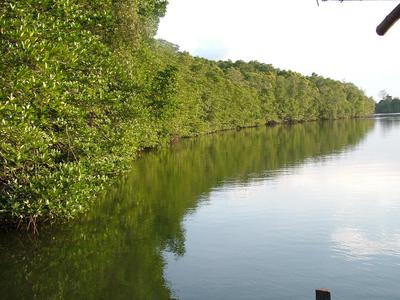
Community-based replanting of mangroves at Muara Sedili Kechil.
Imagine you’re at a beach. A nice one with no plastic bag or drink can litter. And you start to dig a hole in the sand. The more you dig, the more the incoming tide drops sand into the hole. It is a never-ending task, but you keep doing it anyway. As Sarala Aikanathan, director of the Wetlands International (WI) Malaysian branch puts it “being an environmentalist, is not just about doing the job. It is a job you do because it is part of your soul.”
Wetlands International is a science-based organisation that assists governments in the protection and restoration of wetlands. That can be anything from coral reefs, mangrove swamps, mudflats, peatlands, and even aquaculture ponds. With 20 international offices and headquarters in the Netherlands, its mission is to sustain and restore wetlands, their resources and biodiversity.
Sarala’s interest in the environment started at an early age, always playing with butterflies, caterpillars, tadpoles and such. She went on to study marine biology, with particular interest in coastal ecology.
Although the first time she went to a mangrove, she ended up covered in smelly mud and having to take a bus home, she was not put off. “When, the next day the professor asked me if I still wanted to study wetlands I said yes,” she says.
Now, as a full-time organizer for WI, she is deeply involved with many projects across Malaysia, including rehabilitating degraded mangrove areas in Johor. This project is just one that calls on the participation of both the local community and on local corporate support.
But doing the right thing for the environment, long term, is not always easy. For instance, in one of her early projects, she spent six months in 1988 in Trengganu, Malaysia studying leather back turtles along the coast.

Sarala: "Stop the lip service.
"“It’s easy to sit in an office and say, collecting turtle eggs should be made illegal,” says Sarala. “But when you live with the people who make a living from the sea, you know that the solution is not so easy.” Telling the local fishermen not to collect turtle eggs meant taking away their livelihood. “And livelihood has to be managed with the environment,” she adds.
WI’s work concentrates on maintaining and restoring the functions of wetlands across the globe. They have many functions, including acting as filters for water sources such as rivers and lakes. They also provide buffer zones for coastal areas against storms and tsunamis – one of the reasons for the devastation in the recent tsunami was the lack of wetland barriers at the ocean’s edge.
They also help filter pollutants such as sewage, nitrogen and phosphorus fertilizer agricultural runoff, and heavy metals from industrial waste. Wetlands can act like giant sponges. They soak up rain and slowly release this water in drier seasons. And most importantly for twitchers, they provide a permanent and migratory habitat to a wealth of species of plants, fish and wildlife.
To make sure the wetlands in Malaysia are safe from erosion – both natural and human impacts – WI works with local people, governments, NGOs and the private sector. This involves some delicate negotiating, and balancing of individual needs and requirements. But it does not have to mean any one section of the community needs to miss out, says Sarala.
“Us living well does not have to come at the expense of environmental degradation. The way I feel about Mother Nature can be explained as: ‘There is a sufficiency in the world for man's need but not for man's greed’, as very well put by Mahatma Gandhi,” she says.
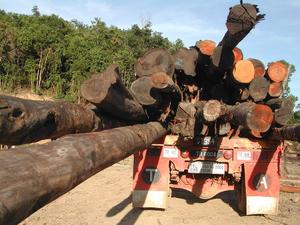
Peatland forests logged faster than any other forest types.
One area that the Malaysian branch of WI is currently applying this approach to is the ongoing research into peatlands in Malaysia, which will then be used to form the basis for sustainable management policies. In this, WI has established that governments undoubtedly play a major role. Without political will, developments that bring in money, but cause the destruction of coral reefs, or landslides or pollute water sources will continue to be built.
But Sarala thinks that things are changing for the better. “I’ve been doing this for over 20 years an I can see that the relationship between NGOs and government is changing. NGOs used to be called anti-development, but now are seen as consultants in projects,” she points out. The Government of Malaysia has been a country member of Wetlands International since 2002.
In Malaysia, WI has been instrumental in the country's accession to the Ramsar Convention in 1994 with the designation of Tasek Bera as the country's first Ramsar site. WI has also developed several major regional programmes on waterbird and wetland monitoring and conservation action, including the Asian Waterbird Census (since 1991), the Asia-Pacific Migratory Waterbird Conservation Strategy (1996-2006) and the Asian Wetland Inventory (1999-2004).
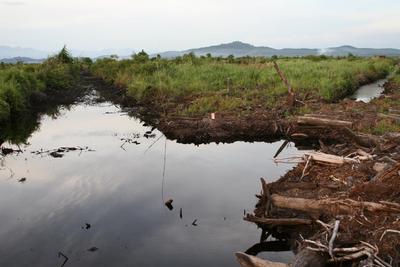
Drainage and degradation of peatlands.
Another significant initiative is underway at the Royal Selangor Golf Club (RSGC). The site has 360 acres of fairways, tees and greens – with 30 acres designated as the wildlife and bird sanctuary. However, existing ponds have deep edges unsuitable for wetland waterbirds to feed, and food sources are limited due to low numbers of aquatic plant species, aquatic insects and fish. WI is currently conducting a survey to give RSGC the data to rectify these issues and restore the wetlands to their full potential.
The one group that Sarala feels has really not stepped up to the green plate is the private sector. “I think the private sector pays lip service to ecological work, rather than the real thing,” she notes. She says they should literally get their hands dirty and do something for the environment. “Although we can’t get rid of everything that impacts the environment, at least we cannot take the environment for granted,” she asserts.
“For instance if a company deals with chemicals – then get involved in river clean up. If they use a lot of wood pulp, then plant trees,” she says. “I feel that the government wants to make a difference, but I don’t feel that way about private sector.”
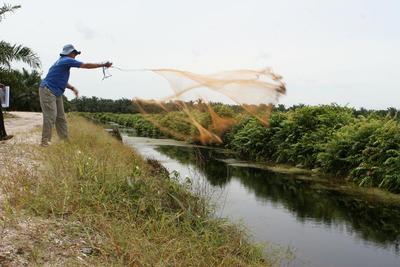
Freshwater fish sampling.
Sarala believes that the biggest hope lies with the next generation. “Knowledge is a big thing now with kids. Children really do want to do the right thing,” she says. She points out that parents and teachers should work together to encourage children to explore the outside world. But this has to start early, and become part of their souls.
So what will it take to change interest to action? Sarala believes this happens when the environment stirs a person’s heart. “Maybe it’s when you see a living thing in the wild, or you watch indigenous people practicing an age old craft – when you realise the world will be a poorer place if this goes away. That’s when I think a person will start to make a difference.”
Other Wetlands International Initiatives:
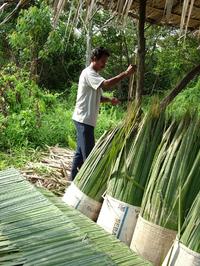
Semelai community resource management.
- Seedling preparation and planting on Hurah Islands, Maldives in an area that was affected by the 2004 Asia Pacific tsunami.
- Community-based mangrove reforestation in Aceh that aims to reduce poverty and coastal vulnerability by encouraging community groups to recreate a mangrove aquaculture ecosystem in Aceh.
- Developing Community Based Mangrove Replanting and Monitoring in Sedili Kecil Mangrove, Johor
For more information, visit Wetlands International www.wetlands.org
Storm Cunningham on reWealth, Renewal and Restoration
The twentieth century was the last and worst of the “de” centuries, writes Storm Cunningham in his book reWealth! (McGraw-Hill, 2008). Words like development, depletion and degradation are “de” words that mostly insinuate a certain loss or dewealth; unfortunately, these words are those we have grown accustomed to while building habitats for living, work and play.
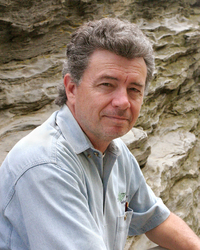
reWealth not deWealth - Storm.
In the 21st century which is fast becoming a restoration economy, claims the author, a new wave of words beginning with the prefix “re” will wrestle down “de” to open doors to an exciting three-dimensional way of providing for life while nurturing the natural environment. Redevelopment, replenishment, remediation and restoration. Words that now make us rethink how we have used resources at our disposal.
Storm refers to the typical growth patterns of three modes of development: new development at the beginning of the life cycle, maintenance or conservation in the mddle and restorative development at the end of this lifecycle. Conservation keeps ecosystems in place, however, should the environment be already under threat due to paucity of ecosystems or resource constraint, there is a compelling need to go beyond conservation to restoration.
Restorative measures that reverse dewealth activities bring a new form of wealth creation which Storm estimates to be two trillion dollars worth annually. This is the basis of rewealth or asset renewal “for a better present and future”. Instead of destroying the environment by compulsively building something to fulfil short-term goals, there is a better way: renewing the health, beauty, quantity, value of resources or reusing natural, built and socio economic assets. This can be done without depleting, degrading or destroying other assets of long-lasting or irreplaceable value.
“Rewealth is basing wealth creation primarily on asset renewal,” explains Storm. Many conservation efforts tend to work in isolation, which poses problems from a macro perspective. As economies and communities are living systems, they have to be cohesive, he says.
Words such as “conservation”, “sustainability” and “green”, writes Storm, “often divide or simply bore people”. Restorative development on the other hand is more appealing of a nonpartisan nature. “If you can look around our planet and honestly say this is a situation you’d like to sustain, you’re just not paying attention,” writes Storm.
“I’m for restoring this mess,” says the former Green Beret SCUBA medic who has travelled around the world to find environments deteriorating over time. Seeing a few restored places that were in better condition than they were on his previous visits such as the restoration of a forest, a historic community, and a reef fishery in Central America triggered “a series of epiphanies as to what was possible for the entire planet.”
Renewal Engine
Storm in his first book The Restoration Economy (Berrett-Koehler, 2002) laid the ground for a renewal engine that’s to become the guiding principle in the follow up reWealth! This book is a must read for anyone who is figuring out how to renew degraded assets, whether natural, built or socioeconomic. It should be textbook material for decision makers in politics, construction, architecture, agricultural, manufacturing, investment, entrepreneurship, conservation and more.
Storm explains that for regeneration to succeed there has to be a renewal of the natural, built and socioeconomic environments together. To help put this into the right perspective is the concept of renewal engine.
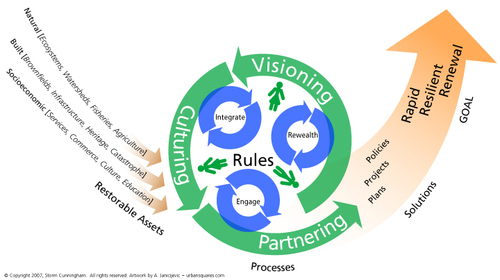
How the Renewal Engine works.
“The renewal engine is a permanent, non-profit, public-private organization. It makes decisions according to the three ‘renewal rules’: rewealth (basing wealth-creation primarily on asset renewal), integration (of natural, built, and socioeconomic assets) and engagement (of all stakeholders),” says Storm, adding that the latter two rules create efficiencies and synergies for the first.
With global recession gnawing at the heels of stable economies, a renewal engine is just the sweet pill to swallow. “Despite all the talk of ‘disappearing wealth’ during this financial crisis, the fact is that there's no shortage of (mostly private) money available for revitalizing our cities and restoring our natural resources,” says Storm. “But most communities and environmental NGOs do not know how to partner effectively with the private sector to accomplish projects that enhance the public good.” The renewal engine is just the model needed in bringing together design, organisation and funding for renewal at the community or regional level.
Storm discovered the renewal engine at work first in Chattanooga, USA, and the next in Bilbao, Spain which he documents in his book. “In both cases, highly-polluted cities that seemed to have no economic future became global models of regeneration,” he says. These were communities that embarked on restoration without a model to work from, guided only by their own intelligence and intuition.
For renewal engine to work, the first start is to create and maintain a shared vision of where the community wishes to go. This follows creating a renewal culture that attracts and nurtures restorative investment. What comes next is creating a constant flow of renewal partnerships: public-public, public-private, and private-private. “The goal is rapid, resilient renewal,” says Storm.
Rewealth is also the only basic type of economic activity that can be pursued forever, he argues. “Unlike many activities that go under the rubric of ‘sustainable’ or ‘green’ but which are merely less-damaging forms of sprawl and extraction (dewealth), there never comes a time when people say we've got to stop revitalizing - our quality of life is too high or we need to stop restoring this watershed- the water is too clean and there are far too many native fish in the river now.”

Rewealth imperative in economic crises.
Storm is also the founder of Revitalization Institute, a global non-profit academy for community renewal and natural resource restoration, which has lately taken on a greater research role. It helps member institutions become a more effective factor in the revitalization of their own communities, regions and countries.
For practical help on the ground, Storm gives advice through a recently established for-profit company called Resolution Fund, LLC. “We train both the public and the private sectors how to be better partners with each other on regeneration projects. Then we help bring the right private partners together on the right projects in the right communities at the right time,” says Storm, who has since been engaged to look into the needs of two rustbelt cities as well as a disaster-wrecked city in the U.S. He also advises a national community development organisation in Canada on ways of using public and private funding for restoration projects.
Storm attributes his passion for integrating economics and nature to his undergraduate business major and biology minor at Windham College in Vermont. He lives in Arlington, Virginia, USA with his family and pet colony of Solomon Island skinks.
Readers can contact Storm at storm@resolutionfund.com, and learn more at the following websites:
www.ResolutionFund.com
www.RestorationEconomy.com
www.reWealth.com
www.StormCunningham.com
www.Revitalization.org
Brenda Vale on Autonomous Houses and Design for Sustainability
By Gregory Teo
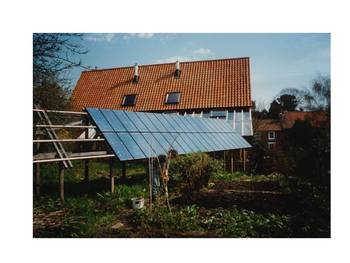
The first autonomous house in Southwell, UK.
In the small town of Southwell in Nottinghamshire, England nestles the first autonomous house in the United Kingdom. Completed in 1993 and designed by professor of architecture with the University of Auckland, green activist and author Brenda Vale, this house makes use of all the natural elements that fall on it.
Solar heat is captured in its giant conservatory to keep it warm during the English winter while triple glazed windows ensure no heat escapes. Electricity is harnessed through installed 2.2 kW photovoltaic arrays with the surplus exported to the national grid. Water is collected off its roof and the sewage is treated in a waterless and odourless composting toilet.
The building of this self-sufficient house is documented in her book The New Autonomous House: Design and Planning for Sustainability that was co-authored with husband and fellow architect Richard Vale. The book provides a manifesto on how to build a home that doesn’t pollute the earth or squander its resources.
Buoyed by her success, Brenda proceeded to design a larger cluster of five self-sufficient houses in the Hockerton Housing Project, also in Nottinghamshire. Built in 1997, the cluster requires no heating and uses lower-than-normal energy consumption that is supplied by onsite renewable energy generation from two 6 kW turbines and 7.6 kW solar panels.

Odourless, waterless composting toilet.
It collects all of its own water for both potable and non-potable usage, while waste is environmentally degraded to a solid compost heap and a liquid portion, which is slowly returned to the surrounding lake after 100 days through a geotextile baffle.
Brenda believes that houses used to be built with sustainability in mind, and her efforts are geared towards that. Brenda says, “People made use of the resources available to them when building houses in the past. We just lost that and it is what we want to recapture if we moved towards sustainability.”
“Today, you pretty much see the same apartment blocks whether you’re in Jakarta, Hong Kong, Singapore, or China. However, if we went to these places a hundred years ago, we’d see different houses because the different climate and resources determined the way houses were built,” she adds.
Why promote sustainability

Water collected off the roof is re-used.
In order to continue living on this earth without putting strain on it, we have to manage its resources with sustainability in mind—which means we might have to grow things. “People have to be in charge of their resources. If you have a vegetable garden, you’d tend to make sure you use all of it. You won’t waste anything if it’s your responsibility. Surplus would be given away rather than wasted,” says Brenda. “However, if you buy food from the supermarket you won’t know the effort that’s gone into it. You just throw away things you cannot finish,” she says.

Space heating not needed with super insulation.
Mass production is not necessarily more efficient; what it does is it adds stages so that specialization makes the work mechanical and easier to do. Brenda says, “You make the product, then process, warehouse, distribute, and retail it. All those different stages require energy and resources. Although it appears to save time to consumers, it might not save time, energy or resources overall.”
She highlighted this with an example of how she used to grow 75% of her food source. “It took us two hours a day to do that. It would have taken us four hours instead to earn the money to buy that amount of food,” says Brenda.
Simple living is thus the sustainable way forward. “There is happiness in being satisfied with what you have and I don’t think sustainability and consumerism can work together. We’ve seen the consequence of that within the last few weeks with the financial crisis as people lived beyond their means,” says Brenda.

Brenda Vale on simple living.
“During my parent’s time, the only debt we had was the mortgage. Everything else you saved up for. You lived within your means. Now, people are living on credit with the thought of supporting their spending by working in the future. Ultimately that’s what led to the financial crisis,” she adds.
Building houses with the future in mind
Building autonomous houses from scratch is easier than most people realise. “It doesn’t cost more than ordinary houses. You just spend the money during the construction in different ways,” says Brenda. At the same time, existing houses can also be converted to eco-friendly lodgings.
Hockerton housing project is designed to work in harmony with Gaia.
On replicating the building of self-sufficient houses on a larger scale, she says, “In China, I’ve seen apartment blocks with rows of solar heater on the roof. I’ve also witnessed water collected on the glass facade of a commercial building for non-potable use such as flushing toilets.”
“It’s not difficult to build houses that sustainably harness the natural environment but people need to realise that they can do it. Examples of autonomous houses help show people that things can be done differently so that they start thinking about change,” says Brenda.
Especially now when people are over-taxing the resources of the Earth, Brenda’s message of self-sufficiency and living within one’s means will help restore and rejuvenate precious natural resources.
Brenda Vale was an invited speaker at the Futuropolis 2058 conference in Singapore: Creating Sustainable Urban Environments through Innovation. Browse the book The New Autonomous House: Design and Planning for Sustainability by Brenda Vale and Robert Vale here.
Huston Eubank on Cutting Emissions, Exploring Biomimicry for Sustainable Buildings
by Jeremy Torr
"I just love this quote: ‘We are surrounded by insurmountable opportunities' - it really describes our current situation well." Huston Eubank, former executive director of the World Green Building Council, and principal of Green Development Services at the Rocky Mountain Institute is realistic about our situation with respect to climate change.
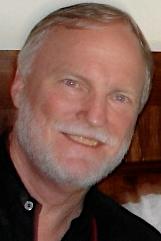
"Measure results" - Eubank
He modestly admits to having "only been on the eco-bandwagon for a mere 18 years or so". But as a fluent and convincing ambassador that we need to look rationally at where we can do most good, most quickly to achieve sustainability, he comes with a persuasive message.
That isn't to drive a hybrid, grow beetroot on your balcony or engage in carbon offsets for your holiday flights. It is to make our buildings more energy efficient.
"When Lee Eng Lok, a wonderful Singaporean architect was called in to help the Grand Hyatt in Singapore save money, he managed to cut energy bills by 45% without a making any changes to the structure of the building. He simply measured accurately what energy was being used and applied sensible practices to cut it. So not only did it cut down significantly on energy waste but it saved lots of money," he says.
"It's not just about doing things to save energy - it's about measuring the results of those savings and seeing what is most effective. Continuously," adds Eubank.
Which is why he advises we stop looking at the emotive, politically-motivated issues that ring all the right green bells but do precious little to save emissions. Instead, he advises, we should look at the figures, the measurements of what produces the most CO2 emissions and address those issues first - and factor in the cost of addressing those issues.
"Everybody is busy looking at the viability of producing biofuels, but that will hardly dent overall CO2 output at all, and will cost millions," he says. "But if we look at the basic figures, we can see that buildings contribute around 40% of all carbon emissions today - so if we cut those by just a tiny bit, we could make huge carbon savings."
According to Eubank, the bonus is that addressing building energy consumption is unlikely to cost us anything - in most cases (as with the Grand Hyatt) it will save money into the bargain and so be highly cost-effective, as well as carbon-effective. He cites an early formula devised by Ehrlich and Holdren in 1971 but often applied to new developments. This states that Environmental Impact = People x Affluence x Technology. "And this, allied with well-established construction phrase that says if brute force isn't working simply use more brute force, has shaped the way we make and use buildings for the last 250 years," he adds.
Describing the impact of buildings on the climate as ‘massive', he points out that it's a situation we have, literally, created ourselves. So we have to create the solution ourselves as well. "We should now not just be looking at reducing energy consumption in buildings and cities, but more than that, actually achieving sustainability," he says.
And in his opinion, this extends to the whole system, not just the individual building components. "Looked at in this way, New York is one of the most energy efficient cities around," he says. Because the place is so compact and people live close together in big buildings, it's easy for them to walk everywhere. This mean car usage - and hence carbon output - is dramatically less than most other major cities on a per person basis. And if people walk, they don't need so many roads, can grow more grass and trees, and save on cooling costs associated with all those heat-sink black tarmac roads. All of which contributes to fewer carbon emissions.
"Being green then can mean much more than just being sustainable," he adds. "In the ideal situation, it should be restorative." To do this simply takes a simple re-arrangement of the Ehrlich and Holdren formula. "Instead we should be saying Impact = People x Affluence/Technology," asserts Eubank.
"Moving technology to the denominator is a massive change that makes technology part of the solution as opposed to part of the problem. This describes the shift we are beginning to see from industrial revolution technology to sustainable technology," he explains.
"What we really need to do is move towards biomimicry, where we try to imitate natural structures and processes for maximum efficiency. At the moment we waste about 90% of the energy we consume, but we already have the knowledge to cut that significantly. All we need to do is change our approach to make it happen," he says.
Huston Eubank was speaking at the Futuropolis 2058 Conference in Singapore on Creating Sustainable Urban Environments through Innovation. Contact Huston Eubank at huston@rmi.org.
How to cut Building Energy waste:
Use natural wind cooling, not airconditiong
Use heat reflective glass to keep temperatures stable
Turn thermostats up/down to nearer to norm air temperature
Use natural lighting where possible
Make sure walls are insulated
Make sure doors and windows seal effectively
Use low power light globes
Check fridge seals or buy a new Energy Star fridge
Next up on Gaia Discovery exclusive - interview with Storm Cunningham, author of ReWealth and The Restoration Economy.
Dr Lida Pet-Soede on WWF Marine Conservation Breakthroughs
by Mallika Naguran
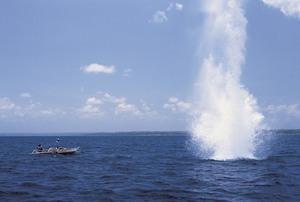
Bombs destroy precious ecosystems. © Jürgen FREUND / WWF-Canon
Fishing methods using blast or cyanide, long haul nets or hook lines often catch innocent bystanders off guard such as turtles and dolphins. All this keeps a woman tossing and turning in the nights. Dr Lida Pet-Soede, leader of the CoralTriangle Network Initiative with WWF, speaks of how certain species are dwindling as a result of poor fishing methods such as the Olive Ridley and Hawksbill turtles.
“Malaysia in the 60s had so many Leatherbacks and nesting grounds, now less are coming back and we wondered what’s happening here?” says the Netherlands-born fishery biologist based in Bali. Six out of world’s seven turtle species are either endangered or critically endangered, while the status of the seventh is unknown.
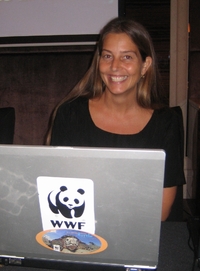
Technology is critical in conservation: Dr Lida.
A strategy to curb bad practices and promote good ones is to educate communities and government authorities by using methods that are readily grasped. This, Lida has found, to be more effective than the previous way of churning technical data with no means of translating into everyday terms.
Satellite Tracking
First, satellite technology is used to plot marine creatures in their natural habitats. In the case of turtles, a transmitter tagged to turtles help churn real-time data on their movements and studied over time. “We started with 25 turtles in 2005 with the US Government’s support, and now we have tagged more than 100 turtles successfully,” she adds, “including the Olive Ridley and Hawksbill which have been difficult to locate.”
The movements show where turtles lay their eggs, and thereafter where they migrate to. This information is used to influence policy-making with regard to the protection of beaches. “Technology in the last couple of years has been increasingly critical for us in turtle conservation in the Coral Triangle,” she shares.
The undersea migratory movements also help WWF identify crucial areas for turtle protection such as creation of marine protected areas (MPAs). In 2007, two green turtles on Sangalaki Island off Indonesia were fitted with a lightweight satellite transmitter. Marina, an 88kg green turtle whose curved shell measures about 96cm was found on Sangalaki Island on 13August 2007, laying her clutch of eggs.
Carolina, a bigger and older green turtle at 112cm long and weighing a hefty 150 kg was also fitted with a transmitter and left Sangalaki on the same day as Marina. Both, however, parted on different journeys (see map).

Turtle tagged with satellite transmitters. Photo by Windia Adnyana.
At the end of the transmitter’s three-month battery life, with satellite tracking, they found that Marina had swum almost 680 miles. She stayed close to Indonesia and Malaysia coastlines, stopping along the way in a number of MPAs that WWF helped establish. This includes the Turtle Islands Park and the proposed Tun Mustapha MPA (her last-recorded location at 93 days).
Typical of an older turtle, Carolina headed out into open waters, moving up through the Sulu Archipelago. When her transmitter gave out after 98 days in November, she had logged 1,100 miles near Basilan Island in the Philippines. There are currently no MPAs in this region; continued armed conflict has limited the opportunities for conservation action.
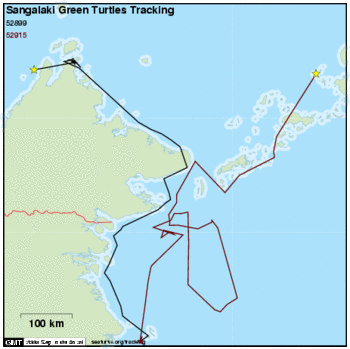
Marina heads up north while Carolina swims northeast. © WWF
Such data gets Lida all excited. “It’s important for us to know where they go, so if they disappear, we can know at once what happened. Once a leatherback swam all the way from Irian Jaya to California! That put our work in the right perspective as we realized then that we had to go beyond beaches to work on the East Pacific oceans.”
Circle Hooks
Another breakthrough in reducing bycatch is something stunningly simple - the use of a different shaped fishing hook, that is, a circular one instead of the traditional J hooks. The sharp point on a circular bait points inward; this does not harm turtles that swallow it, but hooks the fish.
“We had to persuade long line tuna fishermen to try these new hooks, especially those in Indonesia, Philippines, the Pacific and Malaysia. They were apprehensive at first, but upon trying them, they caught as many tuna without harming turtles, and they told others about it,” smiles Lida.
Riding on the success of these trials, WWF is looking into the manufacture of steel circle hooks with the hope of replacing traditional ones.
PhotoVoices
Another unconventional method to engage the community in a down-to-earth manner, shares Lida, is the use of camera images or PhotoVoices International, developed by Ann McBride with the support of Ford Foundation and National Geographic. Lida describes how the whale-hunting Lamalera village in Lembata island, eastern Indonesia were provided with cameras and taught how to use them. They were told to photograph anything that was of importance to them.

Unseen, silent tragedies. Photo © Michel GUNTHER / WWF-Canon
“Some took pictures of their children, some the sea, some the whales and we use these as a starting point to introduce conservation as a means of upholding what’s of high value to them,” she explains. “For instance they say there aren’t many whales in the sea anymore, and we explain how that has happened. This makes them understand the impact of over fishing.”
The international whaling treaty exempts the people of Lamalera from the ban on whale hunting, on the grounds that this is a unique and traditional way of life. Use of harpoons, for instance, is common. The project caught the villagers' imaginations as they also used the images to teach their young ancient cultures while embracing new environmental concepts.
WWF strategies such as community engagement and establishment of MPAs are in addition to others such asdevelopments for poverty alleviation, community-based ecotourism, establishment of fisheries and sustainable live reef fish trade, and more.
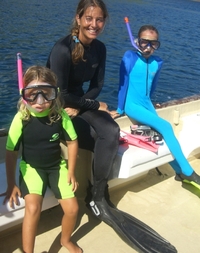
Eva, 5 and Laura, 10 follow mom's finsteps.
Maybe Lida sleeps better now, knowing that some of the Coral Triangle initiatives are in place to protect her precious turtles while providing for communities’ livelihoods.
Photos by WWF.
More information on WWF, visit www.wwf.org.
Email Dr Lida Pet-Soede at lpet@wallacea.wwf.or.id
PhotoVoices at www.photovoicesinternational.org
Dr James Canton on the Future of Energy
by Mallika Naguran
When I asked Dr James Canton, a thought leader and author based in San Francisco, if environmental problems that we face today such as the oil price increase, food shortages and climate change induced natural disasters are going to get any worse, he asked me if I wanted to know the truth. Sure, I said, that’s why I am here.
Governments lack courage.
“Truth is, there is going to be more carbon emissions, there is going to be more climate change disasters and there is going to be more pollution. It will continue to be an escalating problem as long as politicians sit around and do nothing about it,” says the CEO and Chairman of Institute for Global Futures.
The author of The Extreme Future: The Top Trends That Will Reshape the World In The Next 20 Years pulls no punches when talking about governments’ responsibility in restoring our development-stressed planet. According to him, governments should sit up and act as there is barely enough oil-based or non oil-based fuel left to provide energy for the global economy by 2020. “There is even not enough energy to keep pace with GDP growth after 2030,” he says, adding that this period would be within his children's and children’s children generation. Yours and mine too.
According to him, energy will be a drag on growth, security, food and productivity that will start to show even earlier, by 2015. “Unless you have a new innovation on energy, there are not enough alternative energy sources to offset 20% of global demands,” he says.
“You can’t delink energy from other sectors such as medical, construction, transportation and as such an eco strategy is needed to rethink global sustainability,” he says. Dr Canton points the need to intensify investments into alternative forms of energy provided by solar, hydrogen, biofuels, nuclear, geothermal and especially nanotech.
“Without that we are screwed,” he says.
In his book The Extreme Future, Dr Canton writes that nano energy may accelerate the efficiencies of alternative energy sources and possibly enable the production of more cost-effective sources of energy, including hybrids.
Clean tech companies and carbon trading are two areas that will drive forth change, he says; clean tech industry is projected to be one of the largest, global multi-billion dollar industries of the 21st century. Carbon trading that creates a new asset class, according to Dr Canton, is a big solution that will arrest carbon emissions while revenues are channeled towards green energy investments.
When asked if market leaders should play a bigger role in saving the Earth, the reply was candid. “Sure, there are enlightened MNCs that can do more, but there’s only so much they can do. They aren’t governments and governments are slow. Governments are politicians who do not have the courage to bite the bullets.”
What if they did? “Well, they would build infrastructures, invest in R&D for carbon sequestration and they would also build hundreds of green mega city developments that are sustainable and don’t have any cars. We can reverse the trend like in China where people once got around on bicycles because energy was too expensive then. Now they roll out 800,000 cars for their market from the General Motors plant alone.”
He also pointed out that with the projected three quarters of the global population of nearly 8 billion living in coastal cities around the world, that would be a stage for “the perfect eco-storm” with radical storms, sea changes, tidal waves and extreme climate change putting populations at risk. “It will be a more dramatic scene that Hollywood,” he quipped.
Should governments look into crises plans then, as Dr James Lovelock warns they should in his book Revenge of Gaia? “I agree with him,” says Dr Canton,” as environmental problems due to energy crises will result in massive dislocations.”
With developed countries relying more and more on renewable energy and less on traditional sources such as oil and gas, this would also give rise to another set of problems related to geopolitics.
“I forecast that the level of dependence we have on oil - separate from the economics of oil – costs more increasingly over time. The geopolitics of oil is that 80% of it is in the hands of parties that are not moderate political forces. They are individuals with fundamentalist or radical ideologies that are antithetical to modern, liberal societies.”
Dr Canton refers to OPEC nations, Venezuela, Iran or Nigeria where there are politically unstable countries that are either in conflict or potential flash points, adding“You can’t count on an energy source that is under some degree of continual conflict, strike or stress.”
With geopolitical issues, security and terrorism are real possibilities.
“I forecast that five to ten percent of energy purchased by Europe and the US over the next decade and half will lead up to as much as a third of OPEC countries having declining GDPs because they have not moved out of tying themselves to oil. And this will cause some (OPEC) countries to crash. This provides the ground for new levels of terrorists to emerge because they are angry with the world for not purchasing enough oil.”
So he tells the Arab and African leaders when he meets them that they are part of the problem with their rigid ways, and the solution for them is to be more open and embrace a more liberal, productive, democratic society and look into having sustainable economies.
Having oil contributes to energy and security now. Take that away, we have a big conflict to solve, says Dr Future.
Build more green mega cities, says Future Guru.
Dr Canton’s Top 10 Trends of the Extreme Future
1. Fueling the Future - The energy crisis, the post-oil future, and the future of energy alternatives like hydrogen. The critical role that energy will play in every aspect of our lives in the 21st century.
2. The Innovation Economy - The transformation of the global economy based on the convergence of free trade, technology and democracy, driving new jobs, new markets, globalization, competition, peace and security. The Four Power Tools of the Innovation Economy are Nano-Bio-IT-Neuro.
3. The Next Workforce - How the workforce of the U.S. is becoming more multicultural, more female and more Hispanic. Why the future workforce must embrace innovation to become globally competitive.
4. Longevity Medicine - The key forces that will radically alter medicine such as nanotech, neurotech, and genomics, leading to longer and healthier lives.
5. Weird Science - How science will transform every aspect of our lives, culture and economy—from teleportation to nanobiology to multiple universes.
6. Securing the Future - The top threats to our freedom and our lives, from hackers to terrorists to mind control. Defining the risk landscape of the 21st century.
7. The Future of Globalization - The new realities of global trade and competition; the rise of China and India; the clash of cultures and ideologies; and the cultural-economic battle for the future.
8. The Future of Climate Change - How the environment is changing and how we need to prepare for increased global warming, pollution, and threats to biodiversity.
9. The Future of the Individual - The risks and challenges from institutions, governments, and ideologies in the struggle for human rights and the freedom of the individual in the 21st century.
10. The Future of America and China - How destiny of two great nations, from capitalism, to innovation, to democracy tosecurity will champion the world.
Photos by Mallika Naguran
Dr James Canton was the distinguished speaker at Singapore’s SIM Annual Management Lecture22 August 2008. He is also the author of Technofutures: How Leading-edge Innovations Will Transform Business in the 21st Century, Next Millenium.
Get more info at www.futureguru.com and contact Dr Canton at jcanton@futureguru.com
Related article: Generating Ethanol from Waste using Nanotech







